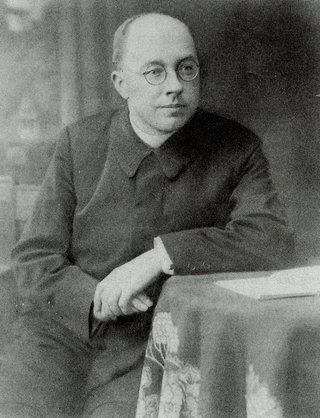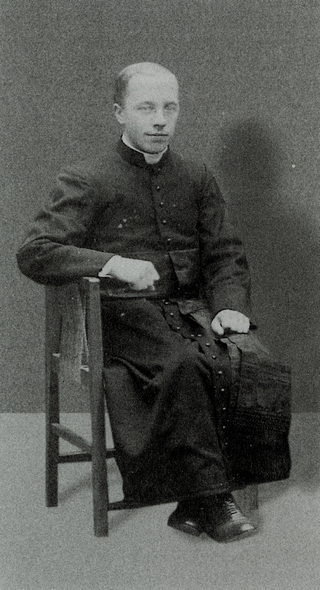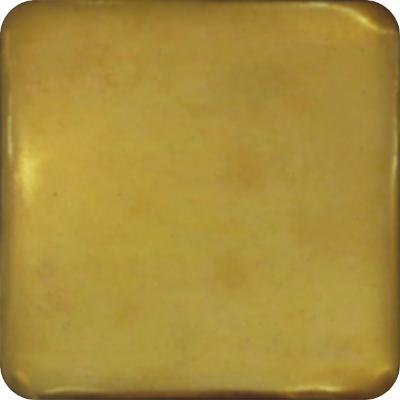Johann Schroffner

Personalia
Born:
Died:
Profession:
Persecution:
Imprisonment 03.08.1939 - 10.08.1939,
Dachau concentration camp 10.08.1939 - 28.09.1939,
Buchenwald concentration camp 28.09.1939 - 28.03.1940,
Murdered on 28.03.1940
Curriculum Vitae
Johann Schroffner was born in Thalgau as the second of 14 children of small farmers Simon Schroffner and Magdalena, née Grabner. After elementary school, he transferred to the Archbishop's College Borromäum in Salzburg, where he graduated in July 1912. The following fall, he entered the seminary in Salzburg and was ordained a priest in 1915. Together with him, Felix Gredler was ordained, who was later also murdered by the National Socialists in a concentration camp.
After his ordination, he was briefly active in the parish of Thalgau, then between 1916 and 1931 he was a cooperator (chaplain) in the parishes of Großarl, Strobl, Eugendorf, Hopfgarten-Markt, Maria Alm, St. Johann in Tirol, Kirchbichl, Taxenbach and Kuchl. In 1931, Johann Schroffner finally became parish priest of St. Martin. After disagreements concerning the lease of the parish farm and with his sister-in-law, he became parish priest in Oberndorf in Tyrol in 1936. The Catholic Action is very active there, with which he works intensively, as well as with the Patriotic Front, of which he is a member.

It would be better to put the party bigwigs in the cannons and shoot Göring in the ass.
Johann Schroffner is arrested by the Gestapo on August 3, 1939. During interrogation, he admits to the charges against him. On August 10, 1939, he was deported to Dachau concentration camp.
After his arrival at Dachau concentration camp, he was assigned to Block 15, the punishment company. Andreas Rieser
I can still vividly remember when I greeted Pastor Schroffner in Dachau. I had already been in this world-famous camp for a year. But not just in the camp, but in the camp again in the most horrible place imaginable: in the punishment company!
In the course of the morning, a rumor was already circulating that a pastor had been brought in again! We had just entered the camp from the heavy labor detachment at lunchtime on August 18, 1939. As we marched through the large, iron double camp gate, a man was standing in the roll call area. He was only wearing trousers, a vest and shoes. He stood there, pale and tired from hours of standing. This face was so familiar to me... I didn't know who it was.... A Tyrolean priest! While there was still time after the meagre, quickly consumed meal, I hurried to greet the new confrere and fellow sufferer. I can still see him so vividly before me: trembling and dripping with sweat, deathly tired! A brief, joyful smile flashed across his pale face. It was a comfort for him to meet me as a diocesan confrere in this 'hell on the edge of the forest'. I was able to give him a few words of encouragement, then it was back to work at speed.
[...]
One morning he was called again. When we got to our punishment block at midday, I was told that Schroffner was in the bunker. On the southern front of the camp, but also inside the barbed wire, was the so-called bunker. Command detention! A total of 140 small cells. Life in the bunker was very scary. Some prisoners didn't have to suffer much there, but they heard a lot... gunshots, terrible wailing and screaming... The '25 strokes of the cane' were also administered in the bunker courtyard and the 'tree hanging' was carried out. We often heard the bloodcurdling screams, the wailing and moaning of those 'hanging on the pole' during roll call in the evening...
After the outbreak of the Second World War, Dachau concentration camp was evacuated for SS troops and Johann Schroffner was sent to Buchenwald concentration camp. There, too, he was sent to the bunker. He suffers badly and loses a lot of weight. When he also fell seriously ill in the bunker due to the situation, he became weaker and weaker. Colonel Ludwig von Bechinie-Lazan, the former security director of Salzburg, who also did not survive the Nazi atrocities, reported how Johann Schroffner suffered and saw his imminent death coming. He had asked him to greet all his acquaintances.
[...] He had no idea what lay ahead of him in Buchenwald. Hauptscharführer Sommer made him jump back and forth in the bunker corridor for hours, driven by bullwhip blows, until he fell over from exhaustion. Sommer then injected gasoline into his bloodstream. He died an agonizing death. Of the sixteen prisoners who rode with me in the Wagnon, Sommer killed twelve.
Neither Andreas Rieser nor Jakob Boulanger were later able to explain why Johann Schroffner was treated so harshly. Even in current research, this remains unknown. The reason probably lies in the reasons for his arrest: Johann Schroffner, a small parish priest from Oberndorf in Tyrol, obviously ranted against an inhumane and anti-clerical regime that was politically repugnant to him. In the concentration camp, he came up against sheer, sadistic anti-clericalism.
Places
Persecution:
Death Place:
Place of activity:
Citations
- Mikrut, Jan (2000): Blutzeugen des Glaubens. Martyrologium des 20. Jahrhunderts. Band 3 (Wien), p. 267–280.
Matricula Online
